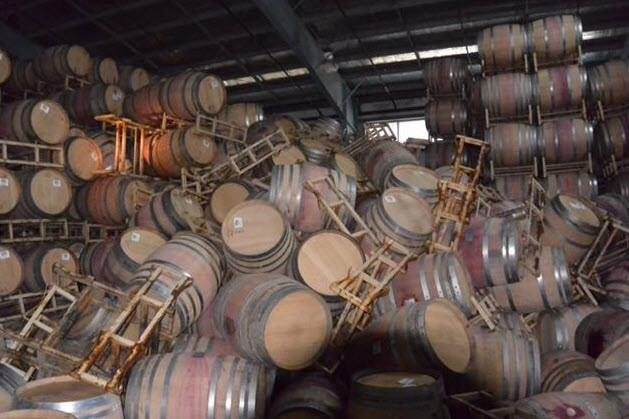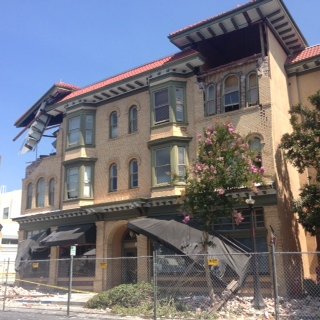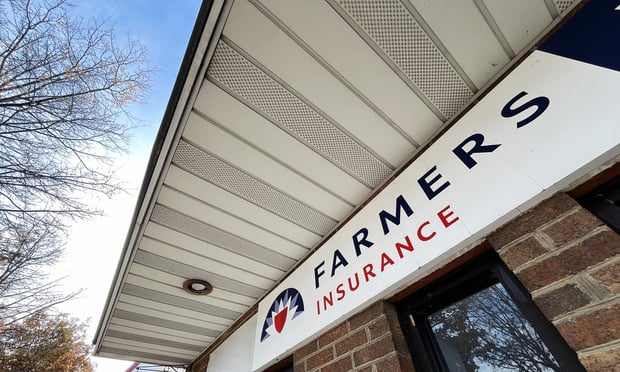Covered losses from the recent earthquake that hit the Napa Valley are expected to be under $1 billion since less than 6% of the residents carried earthquake insurance. The area has seen close to 70 aftershocks since Sunday.
“The area most affected is downtown Napa – a historic town with many older brick buildings that are uncommon in California,” said Steve Starr, general manager of BELFOR Property Restoration's San Francisco office. “Damage from the earthquake also included the façades coming off of buildings, masonry and drywall issues, as well as broken sprinkler lines, dropped ceilings and debris.”
Images of the damage include contents thrown off of shelves, furniture tossed about and buildings that have been flooded from broken sprinkler lines and water mains. It is harvest time in Napa, and while local wineries saw damage to some of their stock, the vineyards themselves were undamaged. “Damage estimates from the commercial policies will be forthcoming, as these are covered by individual insurance companies,” says Lynne McChristian of the Insurance Information Institute. “Larger vineyards typically have coverage for inventory, supplies and equipment. They also take advantage of the risk management expertise of their insurers, so many have taken the necessary steps to mitigate possible losses.”
There are 430 wineries in Napa County according to the Napa Valley Vintners website, the trade association for the wineries, and 95% of these are family-owned. As is frequently the case with many small business owners, some of the smaller wine makers may be underinsured for their losses.
Coverage for the damaged homes and businesses will depend on the individual policies, but there may be some third-party options that go beyond earthquake coverage says Mike Levine, an attorney with Hunton & Williams, LLP in their insurance recovery practice group.
“It comes back to what caused your particular loss,” explains Levine, citing attenuated interruption as a possible reason to look into coverage provided by liability policies issued to other parties. For example, if a homeowner sustained property damage due to negligence from an adjoining neighbor and not the earthquake, then the homeowner may be able to collect for damages from the neighbor's liability policy. A cause and origin investigation would be necessary to determine if there is any liability for the neighbor.
“If you didn't sustain any damage from the earthquake, but your home caught fire because there are fires burning in the area, the loss is due to the fire and not the earthquake,” he added, saying that a fire may be covered under a normal liability policy.
Interestingly, mortgage companies do not require earthquake insurance on their California properties. Since only 6% of owners and renters purchase it according to California Earthquake Authority (CEA), this means 94% of the residents are not covered for their losses, says Martin Hartley, executive vice president and COO of PURE, a policyholder-owned insurer. This leaves a huge exposure for banks, since many homeowners base their decision to purchase earthquake insurance on the price of the policy and the amount of equity in the home. “If I have 20% equity in my home and the rest is a mortgage with a 15% deductible [for the earthquake policy], then I'm basically buying it for the bank and this impacts the decision to purchase coverage,” he explains.
Approximately 20% of the residents who have earthquake insurance are insured through the CEA, which has a high deductible, around 15% of the amount of coverage, and is extremely limiting because it only covers the functional replacement cost of the home. According to Hartley, there is no coverage for artwork or other high value contents, very little loss of use coverage, and driveways or other buildings on the property such as unattached garages are not covered under a CEA policy.
PURE caters to members who have a typical rebuilding cost in the $2-5 million range, and also provides coverage for fine art and jewelry, high end vehicles and watercraft. Approximately 43% of the homes PURE insures in California are protected by earthquake coverage, but Hartley says the company did not have any exposure with this earthquake.
He believes that the reason more of their members purchase earthquake insurance is because of the value of their homes, the contents and collections in the homes, and the fact that the company offers this type of coverage and services the policies themselves. The company also offers a range of deductibles, which allows the policy holders to determine how much risk they want to take in terms of coverage.
The recent earthquake has also highlighted the need for an early warning system for the state. The U.S. Geological Survey (USGS) is currently collaborating on a system with scientists at several institutions including the California Institute of Technology, University of California at Berkeley, and University of Washington. The Earthquake Early Warning (EEW) system uses seismic networks to detect activity in known hazard areas so warnings can be sent to areas outside of where the earthquake originated. This could provide enough time for residents to take cover, businesses to shut down and move workers to a safer area, and for hospitals and other first responders to prepare for the aftermath. California Governor Jerry Brown signed a bill last year authorizing the Office of Emergency Services to begin identifying funding sources for the system, which will cost around $80 million to implement.
Photos courtesy of BELFOR Property Restoration.
Want to continue reading?
Become a Free PropertyCasualty360 Digital Reader
Your access to unlimited PropertyCasualty360 content isn’t changing.
Once you are an ALM digital member, you’ll receive:
- Breaking insurance news and analysis, on-site and via our newsletters and custom alerts
- Weekly Insurance Speak podcast featuring exclusive interviews with industry leaders
- Educational webcasts, white papers, and ebooks from industry thought leaders
- Critical converage of the employee benefits and financial advisory markets on our other ALM sites, BenefitsPRO and ThinkAdvisor
Already have an account? Sign In Now
© 2024 ALM Global, LLC, All Rights Reserved. Request academic re-use from www.copyright.com. All other uses, submit a request to [email protected]. For more information visit Asset & Logo Licensing.










